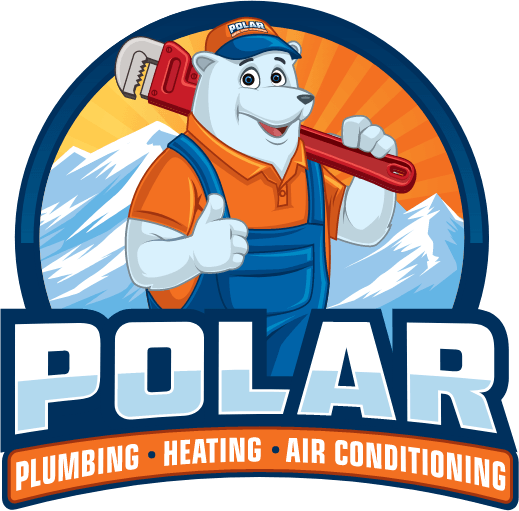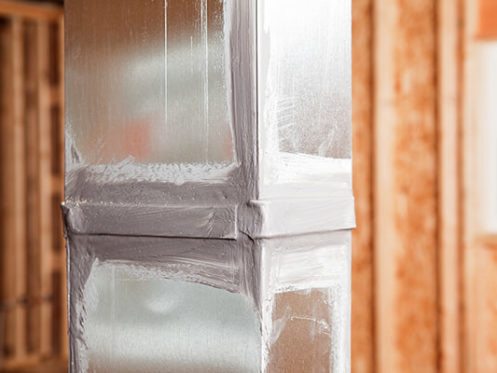HVAC systems are crucial to the proper operation of a building. They serve to maintain a comfortable temperature and distribute air to people and appliances in the building. This is done by circulating air around the rooms, which is why they rely on static pressure. This static pressure must remain ideal throughout the system for an HVAC system to function correctly.
Understanding static pressure is crucial for anyone looking to buy or replace heating and cooling equipment. Those who know what it means might still be unclear about what the numbers mean for their system. To clarify, we’re going to cover what static pressure is in HVAC systems and why it matters so much. Let’s get started!
What Is Static Pressure in HVAC?
Static pressure is the resistance to airflow to heating and air conditioning systems and ductwork. Maintaining the right amount of static pressure to prevent pressure losses and stabilize airflow throughout a building is essential. It is impossible to have no resistance at all, but the idea is to keep it in check.
High static pressure is detrimental to most of our systems. It increases the power required by the equipment and tends to reduce airflow and make the operation of our products less efficient. In some cases, it can even damage some systems. For example, high static pressure can create a problem with an air-cooled heat pump’s coils freezing in cold weather or cause an air conditioner’s compressor to cavitate.
Low static pressure is just as bad for most HVAC systems, so the ideal situation is to maintain the right amount of static pressure to prevent pressure losses and stabilize airflow throughout a building. It could mean leaking plenums or ductwork, missing filters, separated ductwork, or low fan speed. The ideal static pressure is close to zero.
Why Is Static Pressure Important in HVAC?
Maintaining static pressure is important in HVAC because it protects systems from over-pressurization and can keep your system operating at peak efficiency throughout the year. Static pressure will help stabilize the airflow and reduce your system’s power consumption.
Signs of High Static Pressure
It’s essential to keep an eye out for these signs to maintain the right amount of static pressure:
- Higher energy bills
- Uneven heating and cooling
- A failed compressor or blower motor
- A noisy system
Higher static pressure can increase your heating and cooling system’s energy consumption. Static pressure creates back pressure against your evaporator coils or cooling fins, which requires more energy to regulate. The higher the static pressure in your system, the higher the power consumption. As a result, you see an increase in your utility bills.
Most HVAC systems can only handle so much static pressure before they begin to lose efficiency. The pressure in your ductwork and plenum will increase as the static pressure increases. This can cause air to be blown through some areas of your home more than others, resulting in uneven heating or cooling.
A failed compressor or the blower motor is a more common sign of high static pressure. The load on those components increases as the air resistance increases in the system. You may hear a rattling sound if your system’s blower motor isn’t strong enough to overcome the increased load from high static pressure.
If it gets bad enough, your compressor could even overheat and fail. High static pressure can damage mechanical components, which may result in an expensive service call.
A Noisy System
If your system’s fan works harder to overcome high static pressure, it will create more noise. If you hear a squeaking or rattling sound from your system, this may be a sign of high pressure.
Signs of Low Static Pressure
Low static pressure can cause your system to operate inefficiently, reducing overall efficiency. To see if you’re experiencing low static pressure, take a battery-powered fan and place it in an area with high airflow. With the fan operating, feel for any air movement across the surface of the fan. This is likely low static pressure if you feel a strong breeze coming from one direction and no air movement from another.
What Causes High Static Pressure in Your Ductwork?
There are several reasons why static pressure can be high in your ductwork, including:
- Indoor coil is dirty
- Undersized air returns
- Clogged or restricted air filter
The air in your home is filtered through the indoor coil, which is a large filter. If the air in the coil is dirty, it will increase static pressure in your ductwork. A dirty indoor coil will also cause additional airflow problems during a cleaning service because the cleaner will have to work harder to remove dirt from the coils.
When installing an HVAC system, it’s crucial to have the correct size returns for the system. At a minimum, each return should be equal to or larger than the supply duct. If your return is undersized, there will not be enough airflow to pull air into the system. This creates high static pressure in your ductwork. A properly sized and maintained air return also helps your system run at peak efficiency.
The air filter is the second line of defense in your HVAC system. It can help catch dirt and other debris before the interior coil. A clogged filter will restrict airflow and cause your blower fan to work harder. In return, this could increase static pressure in the ductwork.
Preventing Commons Problems

Using the right size ducts and filters will ensure that your ducts are the proper size for your equipment. You’ll need enough cross-sectional area to maintain proper airflow and static pressure throughout the system. Keeping an eye on your filters is also essential, particularly in dusty areas or during the summer months.
Cleaning the indoor coil is another important step. A dirty coil will cause excess static pressure and can restrict airflow, resulting in efficiency problems throughout the system. A technician can advise you on how frequently you should clean your coil.
Lastly, schedule regular maintenance to be completed by a trained HVAC professional. A technician can perform a static pressure test to see your system’s pressure level. If it’s too high, they can tell you where the problem is coming from and how to prevent it in the future. This will ensure that your system operates at peak efficiency all year long. At Polar Plumbing, Heating & Air Conditioning in Newburgh, NY, we help install and maintain heating, ventilation, and air conditioning systems. We proudly serve Newburgh and the surrounding areas!
Aside from heating and cooling services, we also offer plumbing services like drain cleaning, rooter service, and pipe repair. Visit our website for more information on specials, financing, maintenance plans, and reviews.

